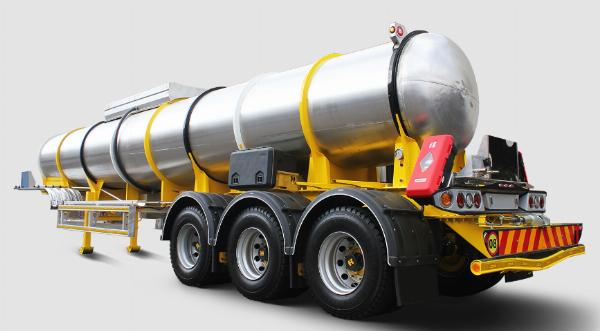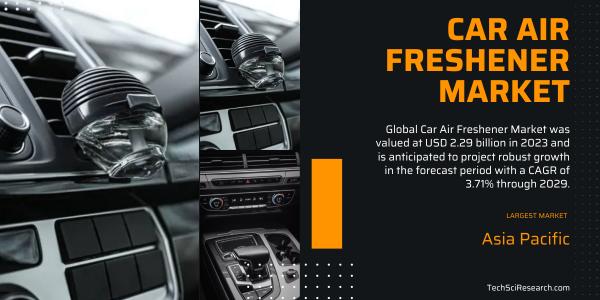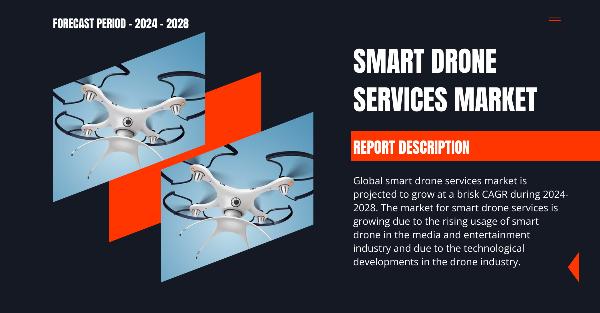India Commercial Vehicle Market - Trends, Share [Latest] & Forecast.
![India Commercial Vehicle Market - Trends, Share [Latest] & Forecast.](https://indibloghub.com/public/images/courses/65ea9b81cd5628439_1709874049.png)
Strong 8k brings an ultra-HD IPTV experience to your living room and your pocket.
According to TechSci Research report, “India Commercial Vehicle Market– By Region, Competition Forecast & Opportunities, 2019-2029F,” the India commercial vehicle market is expected to grow during the forecast period due to rapid urbanization, strong replacement demand, better financing options, government expenditures on infrastructural development across the country, etc. The commercial vehicle sector is highly interconnected with other sectors, especially the manufacturing sector, so any growth or development that occurs in these areas will lead to the growth of the commercial vehicle sector in India.
A commercial vehicle is any vehicle that is used to transport goods or passengers. A commercial vehicle will usually be able to carry two, three, or more passengers, but behind the seating will be something designed to carry materials or tow something large, and this feature will make up most of the commercial vehicles. Government initiatives are going to play a vital role in the growth of the India commercial vehicle market. The expenditure on infrastructural development is going to drive demand across segments and applications. Scrappage policy which is laid down in Union Budget 2022-23 has put special emphasis on allocating funds to replace state or government-owned vehicles older than 15 years. This will help in maintaining replacement demand in the market. To boost the adoption of electric vehicles, the government has come up with the GCC model (Gross Cost Contract, with ‘Own and Operate’ model) to increase the fleet of e-buses in public transport.
Commercial vehicles in India are divided into three categories based on gross vehicle weight, including light commercial vehicles (LCV), medium commercial vehicles (MCV), and heavy commercial vehicles (HCV). Vehicles with a gross weight of less than 7.5 tons are classified as light commercial vehicles, and vehicles with a gross weight between 7.5 tons and 16.2 tons are classified as medium commercial vehicles. Vehicles with more than 16.2 tons gross weight are called heavy commercial vehicles. In India, a major portion of sales in the commercial vehicles segment is occupied by LCVs followed by MCVs and & HCVs. LCVs come with several usages along with fuel efficiency.
Their sales have increased considerably after the pandemic fueled by the proliferation of multiple business models and government initiatives like the National Retail Policy. The transportation of goods follows a hub-and-spoke model in the country in which goods arrive at a certain hub through medium and heavy commercial vehicles and are then distributed in surrounding areas in LCVs.
However, since last year medium and heavy commercial vehicles are marking huge YOY growth. Key drivers for medium and heavy commercial vehicles are coming from the steel, cement, and mining industries due to increased spending on infrastructure. In addition to this, demand for passenger-transporting buses is also taking off due to the reopening of schools, offices, and inter-city travel.
Browse over XX market data Figures spread through XX Pages and an in-depth TOC on the "India Commercial Vehicle Market." @ https://www.techsciresearch.com/report/india-commercial-vehicle-market/8306.html
Commercial vehicles are further classified based on the propulsion type including diesel, petrol, and alternate fuel. LCVs can be found operating on diesel, petrol, and alternate fuel (CNG, blended fuel, electric, etc.). The major portion of fuel in LCVs is dominated by diesel, followed by CNG and then petrol. CNG-powered LCVs have more fleet as compared to LCVs powered by petrol because they deliver better fuel efficiency and simultaneously lower emissions as well. But medium and heavy commercial vehicles are mostly driven by diesel and very few of them use CNG. The reason why they use diesel is because torque is the major and foremost requirement in these vehicles which can only be provided by diesel engines. Diesel fuels have high compression-resistance and thermal efficiency which results in higher torque, which is not the case with petrol engines. Alternatives such as electric trucks have been tested on the ground and are contributing minutely to the sales of medium and heavy commercial vehicles, but they will only get pace in this segment if they are able to meet the mechanical requirements of this industry.
Moreover, commercial vehicles are also divided based on the application, such as logistics, mining, construction, and others. Every industry requires different kinds of commercial vehicles depending upon their requirements. For example, the logistics industry requires commercial vehicles that provide better fuel efficiency, and at the same time carry a maximum quantity of goods. Therefore, they require both LCVs for transporting goods over shorter distances and within the cities and rural areas where medium and heavy commercial vehicles are not allowed. Mining and construction industries require mostly medium and heavy commercial vehicles because they need to carry heavy loads no matter how.
Key market players in the India commercial vehicle market include:
Tata Motors Limited
Mahindra & Mahindra Limited
Eicher Motors Limited
AB Volvo
Hinduja Motor India Limited (Ashok Leyland)
Force Motors Limited
Hyundai Motor India Limited
MAN Truck & Bus India Private Limited
Daimler India Commercial Vehicles Private Limited
Download Free Sample Report @ https://www.techsciresearch.com/sample-report.aspx?cid=8306
Customers can also request 10% free customization in this report.
“There are various factors that are contributing to the growth in India commercial vehicle market, such as rapid urbanization, better financing options, strong replacements, along with supportive government policies. India is focusing extensively on improving road networks and infrastructure of which commercial vehicles are an indispensable part. Apart from this, continuous technological advancements are helping industries associated with commercial vehicles in cost-cutting and better management, thus, creating more scope for commercial vehicle market in India.”, said Mr. Karan Chechi, Research Director with TechSci Research, a research-based global management consulting firm.
“India Commercial Vehicle Market By Vehicle Type (Light Commercial Vehicles, Medium Commercial Vehicles, Heavy Commercial Vehicles), By Propulsion Type (Petrol, Diesel, and Alternate Fuel), By Application (Logistics, Mining, Construction and Others), By Region, Competition Forecast & Opportunities, 2019-2029F,” has assessed the India Commercial Vehicle Market's future development potential and provides data and information on market size, structure, and projected market growth. The report's goal is to give current market knowledge and assist decision makers in making informed investment decisions. Furthermore, the study identifies and analyses emerging trends, as well as key drivers, constraints, and opportunities in the India Commercial Vehicle Market.
You may also read:
Truck Axle Market [2029] - Analysis, Trends, & Insights
Electric Mobility Market Advancements and Business Opportunities [2029]
Automotive Engine Cooling System Market - A Comprehensive Report [2029]
India Commercial Drones Market [2029] Exploring Potential, Growth, Future & Trends
India Construction Equipment Market [2029] Key Trends and Strategies for Expansion
India Electric Passenger Car Market - Trends, Share [Latest] & Forecast.
Table of Content-India Commercial Vehicle Market
Introduction
1.1. Market Overview
1.2. Key Highlights of the Report
1.3. Market Coverage
1.4. Market Segments Covered
1.5. Research Tenure Considered
Research Methodology
2.1. Objective of the Study
2.2. Baseline Methodology
2.3. Key Industry Partners
2.4. Major Association and Secondary Sources
2.5. Forecasting Methodology
2.6. Data Triangulation & Validation
2.7. Assumptions and Limitations
Executive Summary
3.1. Market Overview
3.2. Market Forecast
3.3. Key Regions
3.4. Key Segments
Impact of COVID-19 on India Commercial Vehicles Market
4.1. Key Segments Impacted
4.2. Key Regions Impacted
Voice of Customer Analysis
5.1. Brand Awareness
5.2. Factors Influencing Purchase Decision
5.3. Challenges & Unmet Needs
India Commercial Vehicles Market Outlook
6.1. Market Size & Forecast
6.1.1. By Volume
6.1.2. By Value
6.2. Market Share & Forecast
6.2.1. By Vehicle Type Market Share Analysis (Light Commercial Vehicles (LCV), Medium Commercial Vehicles (MCV), Heavy Commercial Vehicles (HCV))
6.2.2. By Propulsion Type Market Share Analysis (Petrol, Diesel, and Alternate Fuel)
6.2.3. By Application Market Share Analysis (Logistics, Mining, Construction and Others)
6.2.4. By Regional Market Share Analysis
6.2.4.1. North India Market Share Analysis
6.2.4.2. South India Market Share Analysis
6.2.4.3. East India Market Share Analysis
6.2.4.4. West India Market Share Analysis
6.2.5. By Company Market Share Analysis (Top 5 Companies, Others - By Value, 2023)
6.3. India Commercial Vehicles Market Mapping & Opportunity Assessment
6.3.1. By Vehicle Type Market Mapping & Opportunity Assessment
6.3.2. By Propulsion Type Market Mapping & Opportunity Assessment
6.3.3. By Application Market Mapping & Opportunity Assessment
6.3.4. By Regional Market Mapping & Opportunity Assessment
India Light Commercial Vehicles Market Outlook
7.1. Market Size & Forecast
7.1.1. By Volume
7.1.2. By Value
7.2. Market Share & Forecast
7.2.1. By Vehicle Type Market Share Analysis (Pickup Trucks & Vans)
7.2.2. By Propulsion Type Market Share Analysis
7.2.3. By Application Market Share Analysis
7.3. Product Benchmarking
Note: IndiBlogHub features both user-submitted and editorial content. We do not verify third-party contributions. Read our Disclaimer and Privacy Policyfor details.







